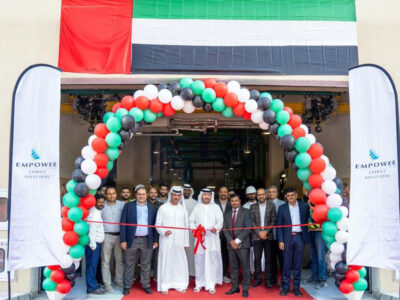If your reactive maintenance bill is accounting for more than 5% of your scheduled plant maintenance cost, something is drastically wrong with your plan.
Operating without unexpected shutdown is the ultimate demand of petrochemicals and refinery operators, as a week of down time could cost a facility up to US$10m, and being down may impact other phases of the production chain. Some parts of the refinery or the plant are subject to frequent failure compared to others, due to different reasons including lack of servicing as per specifications, which often results in part failure.
To avoid these failures, a “turnaround” period is generally planned, which is a periodic inspection and overhaul of the units of a refinery or chemical plant, including safety checks, preventive maintenance, and repair. “It typically requires the shutting down of all or part of a refinery or chemical plant for a period of up to several weeks,” says Hussain Ali Mattar, plant engineer at Aluminum Bahrain (ALBA) and member of the gulf maintenance association.
Maintenance is pretty wide concept and normally consists of three types of maintenance including predictive, reactive and proactive maintenance. “Maintenance strategy would involve a combination of predictive, preventive and proactive maintenance,” says Ganesh Pattabhiraman, services direct at Emerson.
Proactive maintenance is a strategy for stabilizing the reliability of a refinery. Its central theme involves directing corrective actions aimed to at root causes of failure, not active failure symptoms, faults, or machine wear.
The reactive maintenance is a form of maintenance in which equipment and facilities are repaired only in response to a breakdown or a fault. Because of the potential for loss of production, reactive maintenance is at odds with just-in-time production, which is generally called as a fire fighting maintenance. Meanwhile, the predictive maintenance (PdM) is the technique which helps to determine the condition of in-service equipment in order to predict when maintenance should be performed.
With all these options between the hands of plants and refineries operators, views of maintenance experts differ from company to another. “We recommend proactive maintenance strategies where operators can work with specialist industrial cleaning contractors to ‘out engineer’ their fouling problems,” says Mike Watson, technical director at Tube Tech. “Operators need to put aside the cost in order to look at new innovation because heat exchanger technology and the cleaning methods used to clean heat transfer equipment are often 60+ years old. It is time for a change – time for speculative investments to be made in order for larger profits to be accumulated in the mid to long term,” he explains.
Meanwhile, other companies prefer predictive maintenance, as it offers cost savings over routine or time-based preventive maintenance, because tasks are performed only when necessary. “Best in class companies rely a lot more on predictive maintenance than on preventive or proactive maintenance put together. The goal should be to keep reactive maintenance to the minimum, say 5% or lower,” says Pattabhiraman.
All parts of a refinery or petrochemicals plant are subject to failure. “Failures generally occur in rotating and fixed equipment. Both are managed through a site’s reliability and inspection efforts. Emphasis is placed on health and safety, environmental impact and, lastly, lost production,” says Fred Mackie, senior consultant for Solomon Associates.
Mechanical equipments are subject to frequent failure compared to automatic. “Frequent failures happen in mechanical equipment, typically rotating machinery. Among the devices, more frequent maintenance is required in control valves as compared to instruments,” explains Pattabhiraman.
Furthermore, the plant which is most often deemed impossible to clean include crude heat exchangers, furnace tubes, convection fins on furnaces and hairpin (u-tube) heat exchangers. “The reason for this is because the technology to clean them is not available other than through a specialist industrial cleaning contractor,” observes Watson.
To avoid these eventual failures related to rotating equipmen, on line measurements as well as tools to analyze the measurements are available, this includes vibration monitoring, as well as temperature and corrosion monitoring. “There are excellent analysis tools and packages that use these measurements to provide early warning on an impending failure. This helps the maintenance team an opportunity to address the root cause before the problem becomes serious enough for the equipment to fail,” says Pattabhiraman.
With the development of technology, today’s digital smart instrumentations have built-in diagnostics to monitor the health of the devices. For instance, a smart positioner used with control valve can detect travel deviation, supply pressure loss (resulting from leakage), excessive friction and many other useful information, while it is still on line and working. “Some devices go beyond monitoring just their own health. They are capable diagnostics of such as impulse lines, primary elements, temperature sensors etc. There are yet others, that can provide early warning of a process upset,” he adds.
In addition, wireless technology has made it possible to economically bring more signals to the control room than before, parameters that were only measured locally and had to be manually collected and less frequently before. Equipped with this additional information, one can take better decisions based on real data for doing maintenance.
The harsh environment in the Middle East has a tremendous impact on maintenance in several ways, as extreme heat and at times dusty conditions puts a lot of strain on the maintenance staff while doing maintenance in the field as compared to other regions in the world. “Fatigue can limit the efficiency of maintenance staff,” says Mackie.
According to industry data compiled by Solomon Associates, the cost of turnarounds has risen by 15% annually from 2000 to 2008, largely as a result of labour cost increases, material cost increases, and scope of work increases during this period. The number of work hours devoted to turnarounds, for example, increased by 10% annually during this period. “The average cost ranges from $10 to $60 million US, with between 0.3 to 1.8 million work hours,” observes Mackie.
The boom of the downstream industry in the region has opened door for maintenance provider, as their services are in demand in the region. “We have seen growing demand on our full range of on-line and on-site services, geared to facilitating maintenance and repairs with minimum downtime and maximum focus on safety and reliability,” concludes Graham McKay, general manager of Furmanite Middle East.








